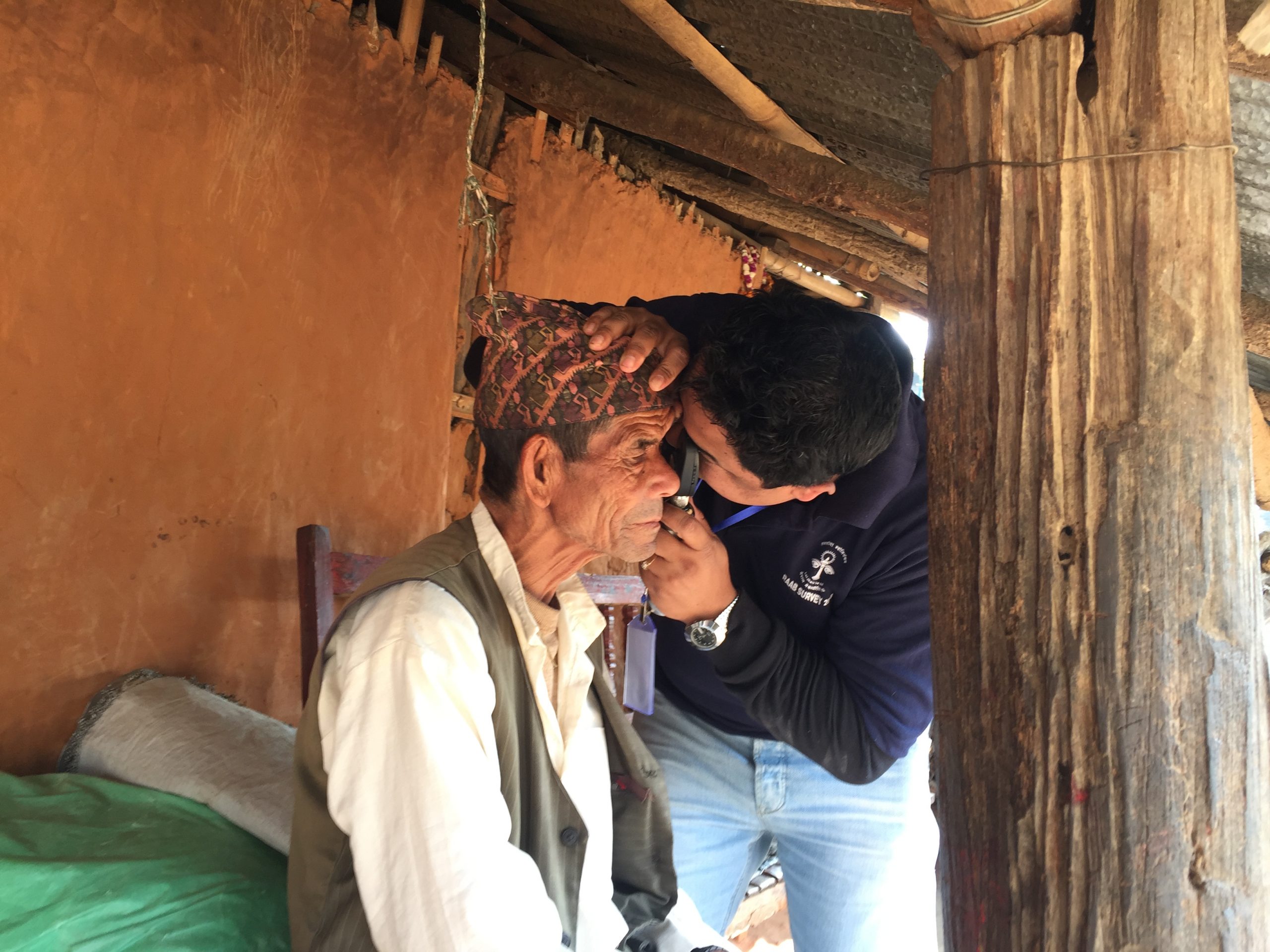Key considerations if you are planning to undertake a RAAB

A certified RAAB trainer must be involved in preparation s for the RAAB, to maintain quality and ensure the protocol is adhered to.
The trainer can help with the preparations for the RAAB as well as train the staff and monitor the fieldwork. RAAB trainers can also support in generating reports and interpreting results.
Contact details for regional trainers for RAAB are given on this page.
All RAAB activities should be organised by a Survey Coordinator who starts work before the actual field survey takes place;
- Developing the sampling frame for the survey: This has to be done by the RAAB trainer before the start of the actual RAAB training, to ensure that the sampling frame is of good quality.
- Carrying out a baseline needs assessment
- Selecting the clusters to be examined: This has to be done during the training in the presence of all survey staff. This is to avoid any suspicion of bias in the selection of clusters.
- Recruiting survey personnel
- Arranging scheduling and transport & equipment logistics
- Organising and ensuring the quality of the staff training
- Managing the data – collecting survey records, managing data entry, analysis and report writing
Tips for a successful RAAB survey
1. Planning
Work with a certified RAAB trainer while planning a RAAB.
Do not underestimate the amount of time and effort involved in undertaking a RAAB.
Plan a RAAB during a favourable season.
Plan a RAAB where the information is needed to plan, monitor and/or advocate for services, working with local eye care providers.
The certified RAAB trainer should ensure that the sampling frame is appropriate for selecting clusters before the start of the training.
Don’t leave things until the RAAB starts – make sure sufficient funds in place for all aspects of the RAAB (training, staff, transport etc) and that relevant authority approvals, logistics, equipment, printing, office and so on are all ready before the RAAB is started.
2. Training
A RAAB certified trainer should undertake the training for RAAB.
The venue for the class room training part should be a simple room that has facilities for seating, projection and place for practicing vision tests.
All members of the survey teams should attend all the training sessions.
The equipment that will be used in the RAAB survey should always be part of the training sessions.
Pre-training arrangements should include decision on where the IOV exercise and pilot RAAB survey will be done and be part of the training time table. Hans Limburg usually uses one of the selected clusters for the field practice. So this is selected on day 1 or day 2.2
3. Fieldwork
The RAAB fieldwork should start immediately after the training and should continue without long gaps.
The RAAB protocol should be followed, especially the examination of eligible people in their own houses.
The teams who will undertake the RAAB must commit for the full time duration including training and a per-diem should be agreed.
For team recruitment consider local customs (e.g have female team members in communities where there is such need) and make sure the team are prepared for long hours of walking in communities. Fieldwork experience is an advantage.
4. Reporting and service provision
“No Survey without Service” should be emphasized. People identified with eye problems in the survey should be referred to an appropriate service.
The results of the RAAB must be written up in a report and presented to the relevant stakeholders.
Stakeholders should be encouraged to use RAAB results to inform planning of services.
Advocacy after RAAB on the results to the authorities where RAAB was carried out and information sharing is absolutely important to build service delivery initiatives.
